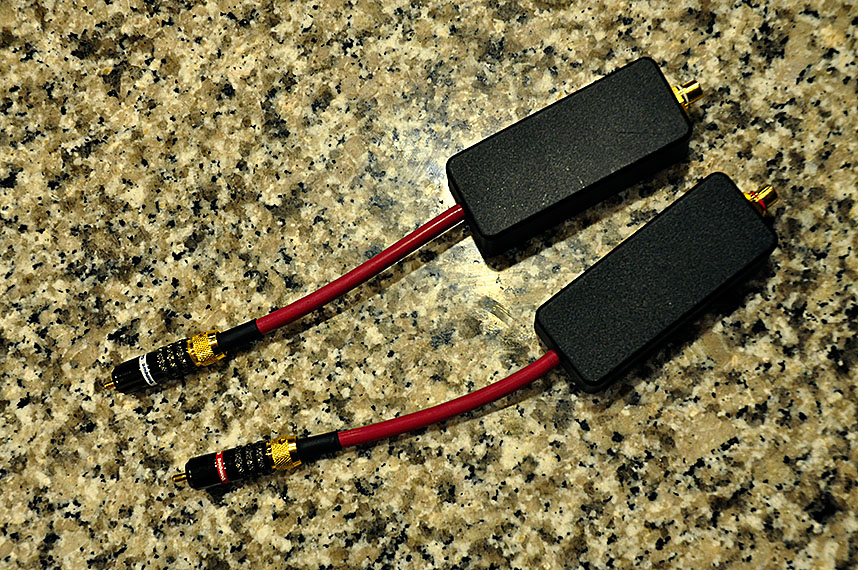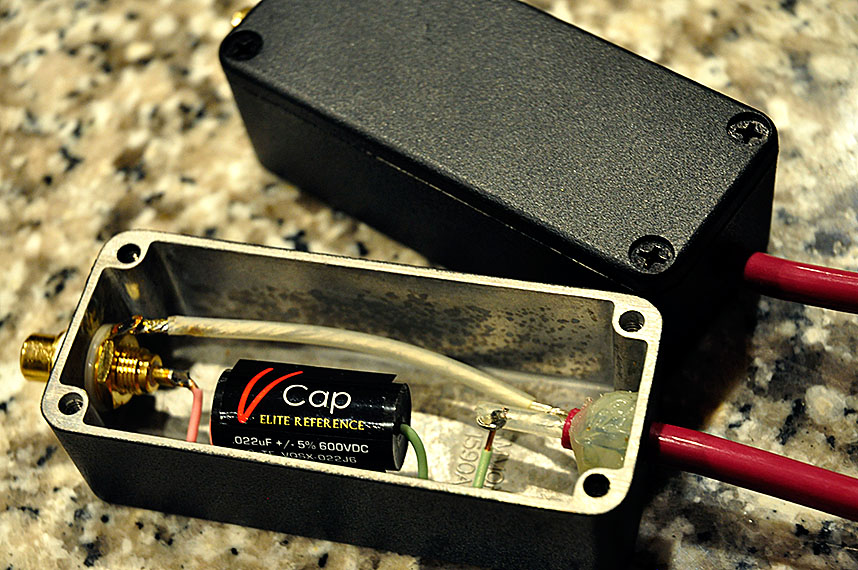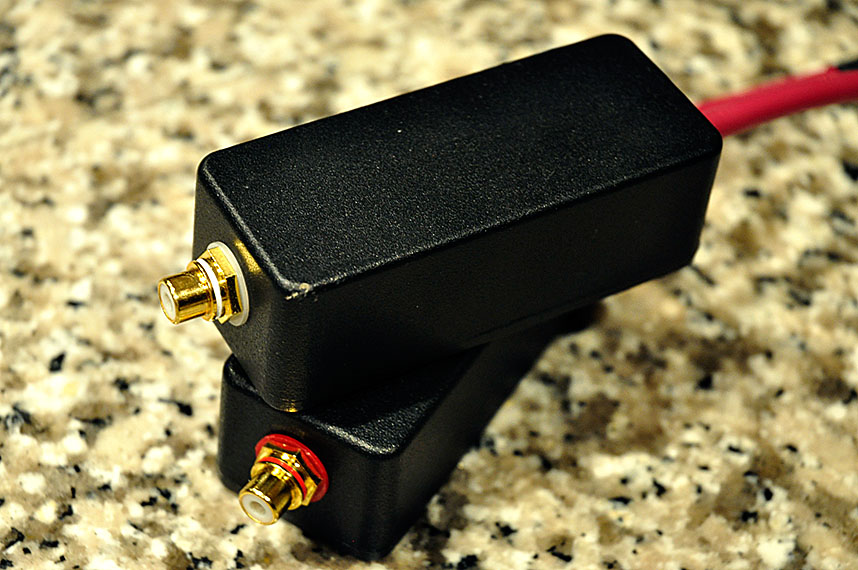Selling a custom professionally made crossover functioning as a passive in-line high pass filter. Operates like the Vandersteen X-2 or M5-HP high pass filters. I had these made using premium parts - VCap CuTF capacitors, Vampire Wire locking RCA's, Hammond metal enclosures - the caps alone cost nearly $150 and are, in my opinion, among the absolute best sounding capacitors available. They sound absolutely transparent - I replaced a $900 pair of Vandersteen M5-HP's with these, as they sounded just as good.
Inserted at the main input of the power amp, they will roll off the signal at a gentle first order slope (6db/oct). In my experience, when integrating a subwoofer into a two channel system, high passing the mains results in an enormous improvement. Barry Ober - one of the chief technical advisors at JL Audio - speaks to this in one of his white papers (
http://www.soundoctor.com/whitepapers/subs.htm). It's a great read on integrating a subwoofer into a two channel system, here's an excerpt regarding why high passing your mains is a good idea:
Actually adding a crossover is really a WIN-WIN situation:
WIN # 1) Since you are now NOT putting in 20 Hz - 80 Hz into the mains you are not using up the available LF cone movement with bass, so the LF cone in your mains is able to play its higher freqs (up to IT'S crossover point) much more cleanly. You get an apparent 6dB or more dynamic range. You can play your system LOUDER, and also with less compression distortion in the LF driver when you're having that Saturday night dance party and you're playing urban bass technopop at 110 dB. Really.
WIN # 2) Since you are not putting bass into that same driver you are not Doppler modulating everything between 80 and 600, or whatever the next crossover point is. This means cleaner mids. By far.
WIN #3) You are not sucking current out of your main power amp at low frequencies, so there is more current reserve to play those highs louder...
WIN # 4) Since the cones aren't moving as far at the low freqs the driver itself is not generating as much back EMF therefore the damping factor and all of its issues are greatly negated. And you don't need to run silver plated cold water pipes to your mains as speaker wires because there is less current draw by the speakers.
WIN # 5) Freqs below 80 are now NOT causing transient intermodulation distortion with the higher freqs (and vice versa) in your power amp. Cleaner still.These are currently configured with 0.022uF VCap CuTF capacitors, which will act as a 72hz first order high pass filter on amps with 100k input impedances. I will also include a pair of 0.22uF Mundorf Silver-Oil caps (these cost me around $80), which will work with amps with 10k input impedances. The input impedance of your amplifier will determine the crossover point. If your amp has a different impedance, let me know and I'll tell you what frequency they will operate at.
Enclosures are compact, so easy to place discretely in the rack, measuring approximately 3-1/2" long x 1-1/2" wide x 1-1/4" tall.



